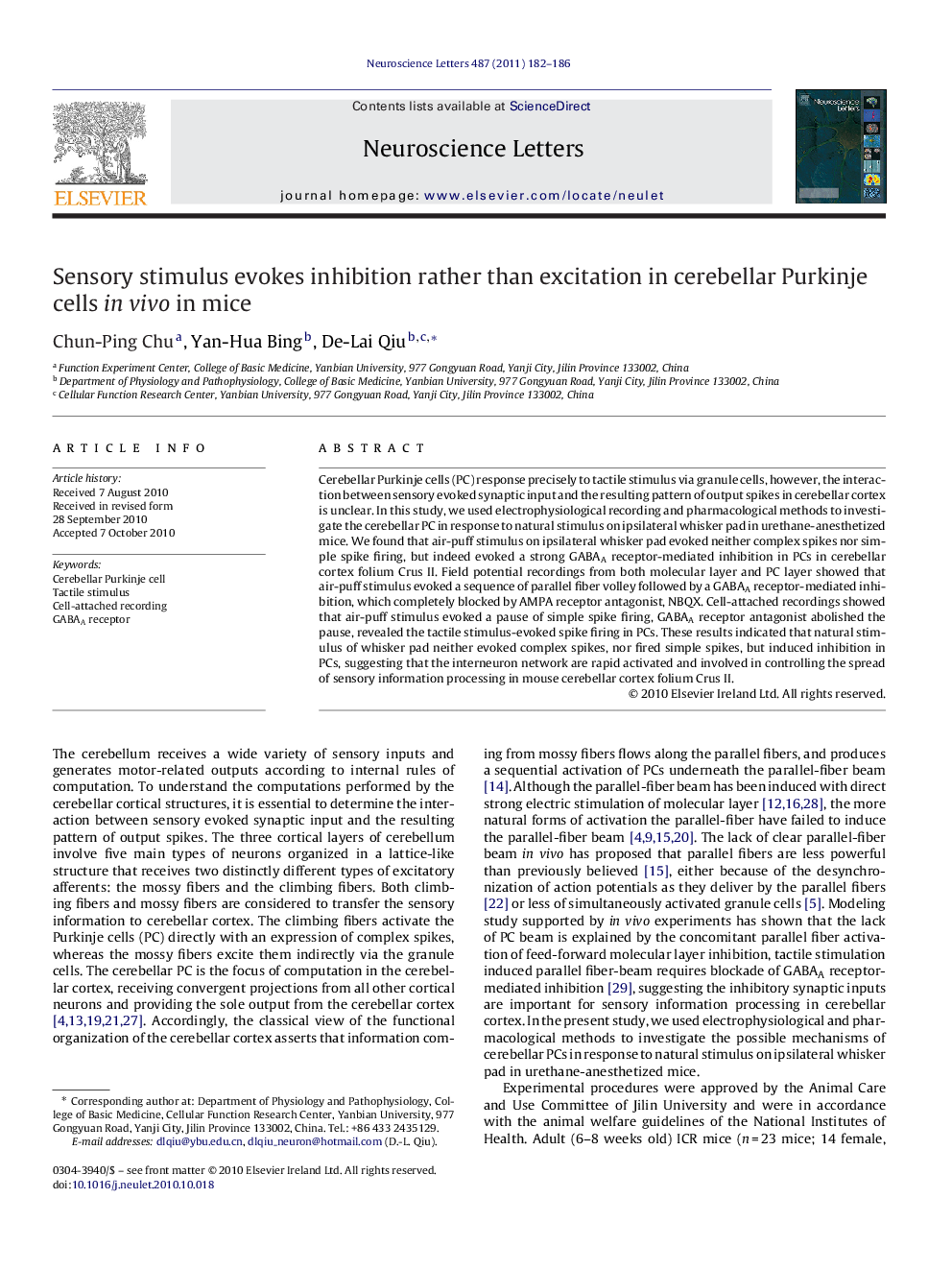| Article ID | Journal | Published Year | Pages | File Type |
|---|---|---|---|---|
| 4345587 | Neuroscience Letters | 2011 | 5 Pages |
Cerebellar Purkinje cells (PC) response precisely to tactile stimulus via granule cells, however, the interaction between sensory evoked synaptic input and the resulting pattern of output spikes in cerebellar cortex is unclear. In this study, we used electrophysiological recording and pharmacological methods to investigate the cerebellar PC in response to natural stimulus on ipsilateral whisker pad in urethane-anesthetized mice. We found that air-puff stimulus on ipsilateral whisker pad evoked neither complex spikes nor simple spike firing, but indeed evoked a strong GABAA receptor-mediated inhibition in PCs in cerebellar cortex folium Crus II. Field potential recordings from both molecular layer and PC layer showed that air-puff stimulus evoked a sequence of parallel fiber volley followed by a GABAA receptor-mediated inhibition, which completely blocked by AMPA receptor antagonist, NBQX. Cell-attached recordings showed that air-puff stimulus evoked a pause of simple spike firing, GABAA receptor antagonist abolished the pause, revealed the tactile stimulus-evoked spike firing in PCs. These results indicated that natural stimulus of whisker pad neither evoked complex spikes, nor fired simple spikes, but induced inhibition in PCs, suggesting that the interneuron network are rapid activated and involved in controlling the spread of sensory information processing in mouse cerebellar cortex folium Crus II.
Research highlights▶ Air-puff stimulus on ipsilateral whisker pad. ▶ Cerebellar Purkinje cell-attached recording. ▶ GABAA receptor-mediated inhibition.
